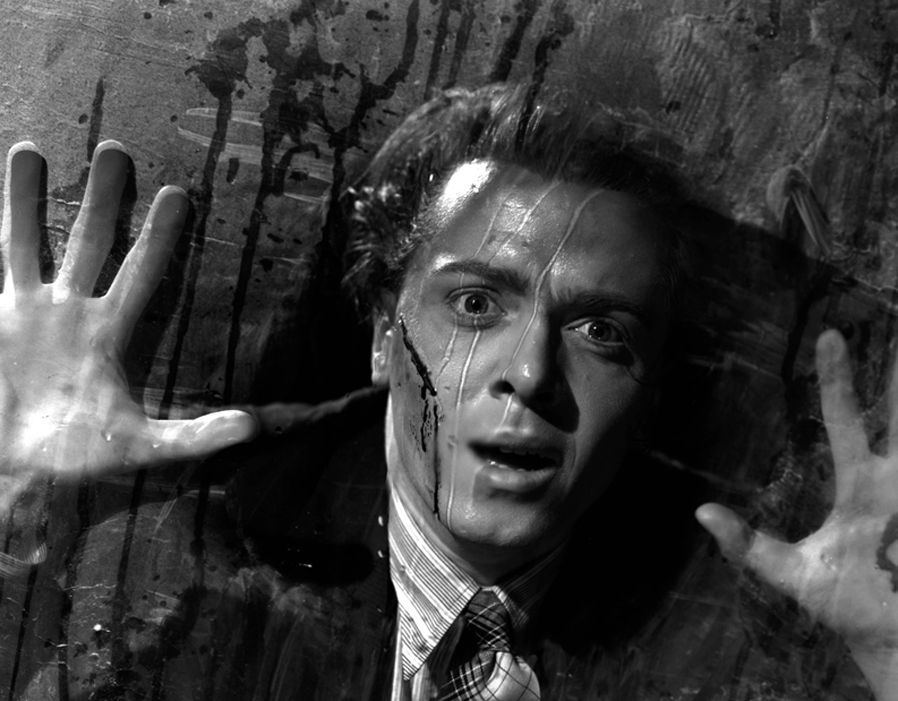Brighton Rock and Catholicism- Greene's Message to Doctrine
- henrystone2004
- Mar 1, 2021
- 4 min read
Updated: Mar 2, 2021
Graham Greene upturns the scintillant charm of Brighton, like a ship on its waves, to reveal the rotting hull of betrayal and corruption in the 1930s. In a Shakespearean plot, the murder of journalist Charles Hale, leads to an escalating series of coverups by an ambitious gang. The young catholic gang leader, Pinkie Brown, carves his path to primacy in the criminal underworld. Begrudgingly, he marries Rose, a sweet and bovine young girl with knowledge of his criminal life, in an attempt to silence her. All the while, Ida Arnold’s pursuit of Pinkie turns his decisions nastier and more problematic.

The strong awareness of morality and punishment is etched into the character of Pinkie. This is understandable as Greene flirted with Catholicism throughout his life. With the imagery of dishevelled bleak slums and the infernal white noise of waves and murder, the brutal perdition of hell becomes an earthly presence. Pinkie’s sordid upbringing casts shame over the repressions of his faith. This shapes a self-loathing and acerbic entity of evil. As a result, Greene alludes to the concept that “a Catholic is more capable of evil than anyone”. Greene suggests here that the Catholic fascination with punishment and the acceptance of sin creates a great capacity for evil. This is aptly relevant with the violence of Catholicism through time, from the persecution of Jews by the Church in the middle ages and the 20th Century Irish tensions with Britain to the actions of the Italian Mafia. The concession of sin in Catholicism, with communion and confession, further demonstrates this capacity for evil in all Catholics.
The anti-Christ figure resonates throughout fiction, stretching from Adrian in Rosemary’s Baby to Judge Holden in Blood Meridian. However, Pinkie Brown stands in isolation to these portrayals of incorrigible and sadistic evil. While Pinkie’s acts of cunning murder and sin are reproachful, they have bloomed from an upbringing of despair. Greene also depicts him as an uneasy knot of adolescence and self-doubt which clash with the disjointed world of crime that he becomes embroiled in. Noticeably, we see his vulnerability as an anti-hero in his reticence to kill Rose and Dallow, his fear of the senior and domineering Colleoni, his ashamed sexual lust and his instinctual connection to music. As a result, the entire novel is taut with the angst of his conflicted nature. However, it is ultimately the tragedy of Pinkie’s self-fulfilling death drive that confirms a certain fate of damnation. Greene’s ability to concoct such a jarring and warped character is a testament to the brilliance of his bleak and visceral style. With this sense of damnation, Greene conjures up the chaos of a fragmented underclass subculture that substitutes morality for mortal pleasure and power. This is rife even in the modern day with the proliferation of drug use, the posturing anarchy of knife crime, teenage pregnancies, the rejection of education and even smartphone addictions. Arguably, the structure of religion and its instilled morals could lessen the plight of much of the underclass in society. As Emile Durkheim said, religion can “unite” people into “one single moral community”. Greene mourns the chaos of secular modernity which helps to establish the tragic damnation of Pinkie in the novel.
Greene also uses the character of Ida Arnold, a plump and jovial figure of justice, to ridicule the self-righteousness of secular society. While Greene writes derisively of the bohemianism of Ida Arnold in Brighton Rock, he was himself a rather pleasure-seeking Catholic. In a fit of depression, Greene even risked killing himself in a thrilling game of Russian Roulette when he was younger. The parallels of this ashamed self-destructiveness and repression bleed into the character of Pinkie Brown. For Greene what he loathed most was not sin itself but the lack of regret in it with the liberalism of secular society. Ida’s sanctimony was evident in her shameless bohemianism that contrasted with the mantra that “Ida knows best”. Throughout the novel, Ida Arnold is a product of the distinct class system of Britain’s past. Her common curiosity in the lives of Pinkie and Rose is presented with the brash entitlement of the working classes. Greene mocks such a demographic “of the people” with the sentimentality of Ida who “cried in cinemas at David Copperfield” and whose “homely heart was touched by the word ‘tragedy’”. This in a sense breeds an air of snobbishness into the distanced narration of the novel. However, this also adds indirectly to supercilious and ambitious nature of Ida’s foil character: Pinkie Brown. Through the cynicism of Greene’s writing and his personal life, we see that he loathes the conviction of religious arguments as they are engulfed by uncertainty. His disenchantment with the presumptuousness of ideology in general was mirrored in his abandonment of the British Communist Party in 1922. Similarly, the utopianism of communist thought reflects the comforting salvation of religion as Bertrand Russel pointed out. This rejection of doctrine shaped Greene’s unique views, a self-proclaimed “Catholic agnostic”. His outlook on the stubbornness of opinion has been proven right by the roars of hostility across social media that only cement the polarisation of opinion. This unwillingness to compromise has resulted in the diversion of opinion, from conspiracy theories to the election of Donald Trump and even Brexit. This parable is brutally engraved into the plight of Rose, Pinkie and Ida who are all victims of their own obstinacy.



Comments